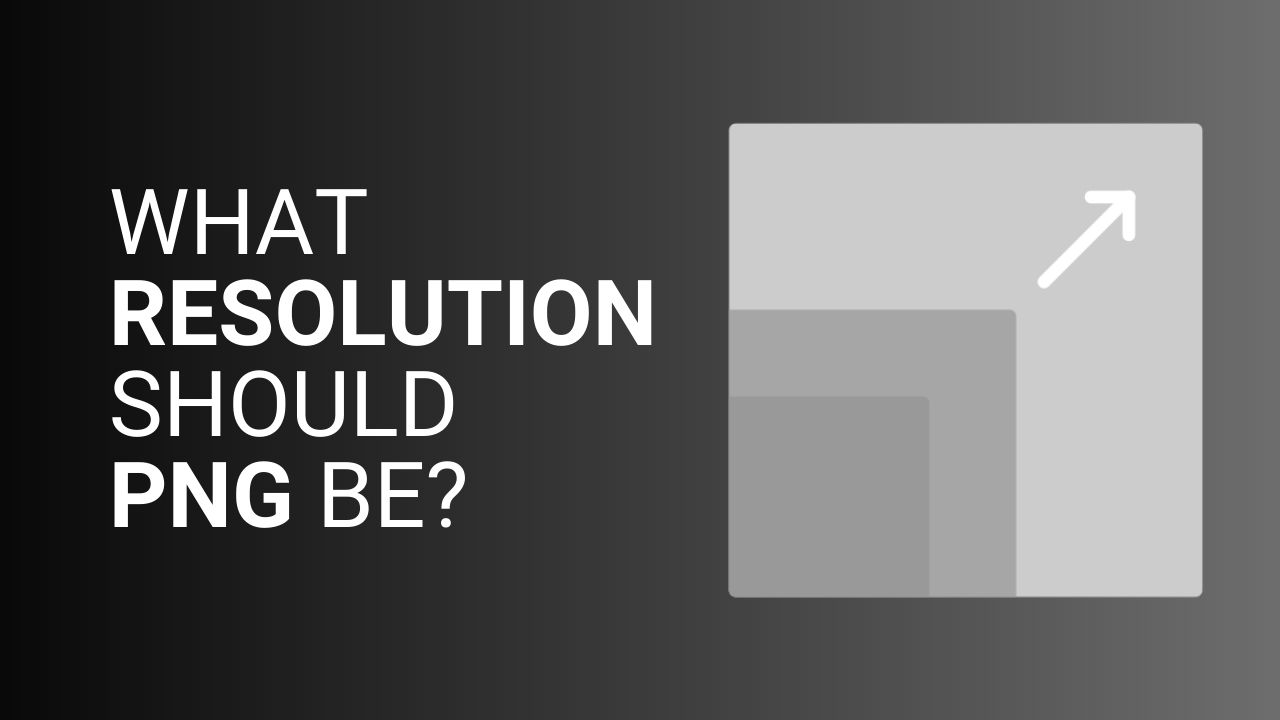What Resolution Should PNG Be?
By Glen
Published March 29, 2023
 What Resolution Should PNG Be?
What Resolution Should PNG Be?
Inside This Article
Quality matters when it comes to displaying your images online! Nowadays, PNG is becoming increasingly popular as a file format because of its ability to render high-resolution visuals with transparency. But how do you know which resolution will work best for your image? This article guides you on selecting the right one that'll ensure maximum quality and visual appeal - empowering you to create graphics like a professional photographer or designer!
Key Takeaways
- PNG is quickly becoming the go-to image format, providing a stunning display of clarity and transparency with every file.
- When selecting the resolution for your PNG images, consider the intended use, display size, image complexity, file size, and compression.
- With higher-resolution web images, websites can experience a boost in both visual appeal and overall performance.
Understanding Image Resolution
Determining the ideal image resolution is essential to creating engaging visuals without sacrificing website performance. Understanding resolution and image size can help you strike a balance, as it's directly linked to an image's detail and storage requirements. Generally speaking, higher resolutions mean more detailed imagery but also larger file sizes that affect loading times – something which should be considered when optimizing your site.
What Resolution Should PNG Be?
When it comes to determining the appropriate image resolution for your PNG, there are several factors to consider.
Intended Use
Selecting the right image resolution for your PNG is essential. Will they be viewed as small thumbnails or full-width headers? Web image requires different pixel dimensions than the resolutions that will be used to print images. Understanding how your images will look on screen and paper ensures you choose a suitable size every time.
Display Size
The PNG image dimensions are another important factor to consider when selecting a resolution. Images that will be displayed on small screens, such as mobile devices, may not require as high of a resolution as images that will be displayed on larger screens, such as desktop monitors or televisions.
Image Complexity
When choosing the ideal resolution for your PNG images, consider their complexity — simple graphics and typography don't require as high of a definition compared to more intricate graphics with fine details.
File Size
The file size of your PNG images is another important consideration. Higher-resolution images will result in larger file sizes, which can impact website performance and load times.
Compression
PNG images can be compressed to reduce file size, but compression can also impact image quality. Finding the right balance between resolution and compression is important to ensure high-quality images that load quickly.
Best Practices For PNG Resolution
Based on the factors we've discussed, here are some best practices for selecting the appropriate resolution for your PNG images:
Web Use
For PNG images that will be used on the web, a resolution of 72 pixels per inch (PPI) is generally sufficient. This is because most computer screens display images at a resolution of 72 PPI.
Print Use
For PNG images that will be used for print resolution, 300 pixels per inch (PPI) is generally recommended. This is because most printers require an image resolution of at least 300 PPI for high-quality printing.
Image Size
When selecting the resolution for PNG images, consider image size as it will appear on the webpage or in print. A higher resolution is generally needed for larger images, while smaller images may not require as high of a resolution.
Compression
When compressing PNG images, try to balance file size with image quality. It's generally best to use lossless compression to preserve image quality, but be mindful of the pixel dimensions that will impact the size of the file.
FAQs
What is the difference between PNG and JPEG?
PNG files are typically used for images that require transparency or a higher level of detail, while JPEG files are better for photographs or images with lots of color variation. We do not recommend using JPEG because it is a "lossy" format. This means that to reduce the file size, image data is thrown away.
Can I increase the resolution of a PNG image?
Technically, you can increase the resolution of a PNG image, but doing so will not increase the quality of the original image. It can lead to a loss of quality and make the image appear blurry or pixelated.
You can refer to our How to Make PNG Bigger Without Losing Quality article for a more detailed guide.
How do I check the resolution of a PNG image?
You can check the resolution of a PNG image by opening the image in a photo editing program and looking at the image properties. The resolution will be listed in pixels per inch (PPI) or dots per inch (DPI).
Why is it important to optimize image resolution?
Optimizing image resolution is important because it affects both image quality and website performance. Images that are too large or have a high resolution can slow down website loading times, which can negatively impact user experience.
Conclusion
Choosing the right resolution for your PNG images can be a challenging task. Truly, high-resolution images are more appealing than low-resolution images. To ensure you're getting maximum image quality, follow best practices tailored to each situation and give viewers only the very best experience possible!